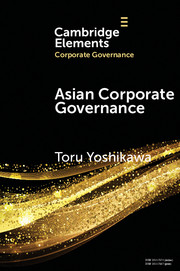Element contents
Asian Corporate Governance
Published online by Cambridge University Press: 09 March 2018
Summary
- Type
- Element
- Information
- Series: Elements in Corporate GovernanceOnline ISBN: 9781108552936Publisher: Cambridge University PressPrint publication: 22 March 2018
References
- 11
- Cited by



